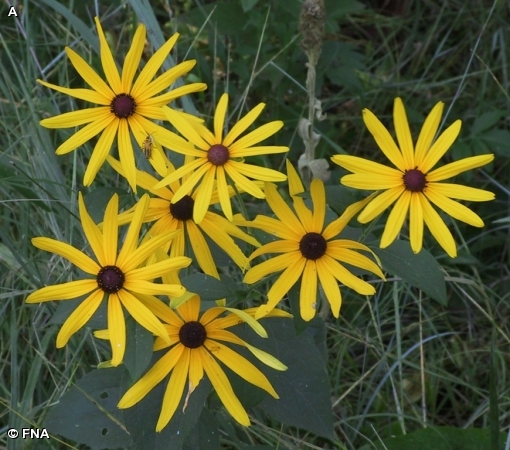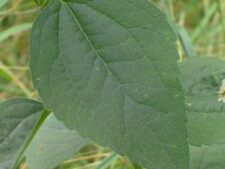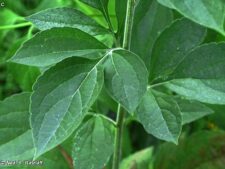
SWEET CONEFLOWER
Rudbeckia subtomentosa
SUNFLOWER FAMILY (Asteraceae)
 Identification
Identification
- Flowering time - July, August, September
- Rare in prairies at NW
- Sunflower with dark, globe or cone-shaped central disk
- Taller and not as hairy as Black-eyed Susan (R. hirta)
- Larger flowers and fewer branches than Brown-eyed Susan (R. triloba)
This native perennial grows up to 6 feet tall. Its alternate leaves have short, soft hairs and are usually stalked and finely toothed. The leaf shape is variable. Upper leaves are simply rounded to oval (B), but lower leaves usually have at least some leaves that are deeply divided into 3 or 5 lobes, the center lobe larger than the rest (C). At the top of the plant are several 2-3 inch wide flower heads, each on a long stalk (D). They have round to cone-shaped purplish to brown disks surrounded by 12-20 narrow, spreading, yellow, petal-like ray florets (A).
Prefers moister prairie sites, flowering from July through September. Our plants are north and west of their usual range originating from seed used in restorations. It is rare at Neale Woods where plants have been seen in Nebraska and Jonas Prairies. Before the 2011 flood there were a few plants in the garden area across from the Gifford Road parking lot at Fontenelle Forest, but they did not survive that event.
Sweet coneflower is usually much taller, has less prominent leaf and stem hairs and often has deeply lobed lower leaves separating it from Black-Eyed Susan (Rudbeckia hirta). Larger flower heads and unbranched stem differentiate it from Brown-Eyed Susan (Rudbeckia triloba).
Dried or crushed leaves give off a fragrant aroma, likely responsible for its common name.
The content of NatureSearch is provided by dedicated volunteer Naturalists of Fontenelle Forest who strive to provide the most accurate information available. Contributors of the images retain their copyrights. The point of contact for this page is: Neal Ratzlaff.



